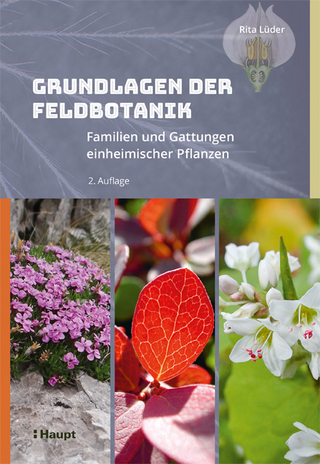
Frustrating Flowers and Puzzling Plants
Pelagic Publishing (Verlag)
978-1-78427-331-6 (ISBN)
If you have tried to identify wildflowers, you'll already know exactly what is meant by the title of this book. Although a lot of plants are relatively straightforward to recognise, many others are not. Standard wildflower guides tend to provide as much guidance with identifying the easy and distinctive as they do with complex, tricky species. This ingenious book is designed to come to the rescue of the exasperated novice botanist and to help those more experienced who might be stuck on unfamiliar and complex groups.
From willows to water-crowfoots, from eyebrights to dandelion look-a-likes, all of us have struggled with baffling specimens or the seemingly cryptic. Presented here is a fresh new approach to identifying difficult plants by giving an understanding of the biology behind their complexity. In simple language, you will be directed to the particular parts of the plant that you need to look at most closely. The tabular keys are more user friendly and evolutionarily valid than conventional dichotomous keys, which are often confusing and unwieldy. Each chapter contains illustrations of key diagnostic features, rather than of entire plants. Other novel aspects include coverage of the historical recognition of complexity within each group, which is used to inform debate about the level of resolution that may be most appropriate for your needs.
This accessible guide is the perfect chance to get to grips with that challenging group you keep saving for 'next year' or for untangling a botanical mystery which keeps repeating itself.
John Warren has had a long academic career researching the origins of botanical diversity and promoting public understanding of science. Having been a senior lecturer in ecology at Aberystwyth University, in 2016 he became Vice Chancellor of the Papua New Guinea University of Natural Resources and Environment. Now retired back in the UK, he is an Associate Tutor for the Field Studies Council.
Foreword
Preface
Acknowledgments
SECTION I. APOMICTIC SPECIES: SPECIES THAT PRODUCE SEEDS WITHOUT SEX
1 Brambles
2 Dandelions
3 Lady’s-mantles
4 Sea-lavenders
5 Whitebeams, rowans and service trees
6 Yellow composites – things that look a bit like a dandelion
SECTION II. HYBRIDS: SPECIES THAT HAVE SEX WITH OTHER SPECIES
7 Docks and sorrels
8 Pondweeds
9 Roses
10 Marsh-orchids and spotted-orchids
11 Water-crowfoots
12 Willows
SECTION III. INBREEDERS: SPECIES THAT HAVE SEX WITH THEMSELVES
13 Eyebrights
14 Fumitories
15 Violets and pansies
16 Short white-flowered crucifers: cresses
17 Tall yellow-flowered cabbages, mustards, rapes and rockets
SECTION IV. POLYPLOIDS AND RAPIDLY EVOLVING SPECIES
18 Broomrapes
19 Forget-me-nots
20 Speedwells
SECTION V. SUCCESSFUL FAMILIES WITH LOTS OF SPECIES
21 Dead-nettles, mints and woundworts
22 Blue and purple vetches and peas
23 Umbellifers: carrots, parsnips, Hemlock etc
Glossary
Index
| Erscheinungsdatum | 05.12.2023 |
|---|---|
| Reihe/Serie | Pelagic Identification Guides |
| Zusatzinfo | Line drawings, black and white; Illustrations, color |
| Verlagsort | Exeter |
| Sprache | englisch |
| Maße | 138 x 216 mm |
| Gewicht | 615 g |
| Themenwelt | Sachbuch/Ratgeber ► Natur / Technik ► Natur / Ökologie |
| Naturwissenschaften ► Biologie ► Botanik | |
| ISBN-10 | 1-78427-331-7 / 1784273317 |
| ISBN-13 | 978-1-78427-331-6 / 9781784273316 |
| Zustand | Neuware |
| Informationen gemäß Produktsicherheitsverordnung (GPSR) | |
| Haben Sie eine Frage zum Produkt? |
aus dem Bereich


